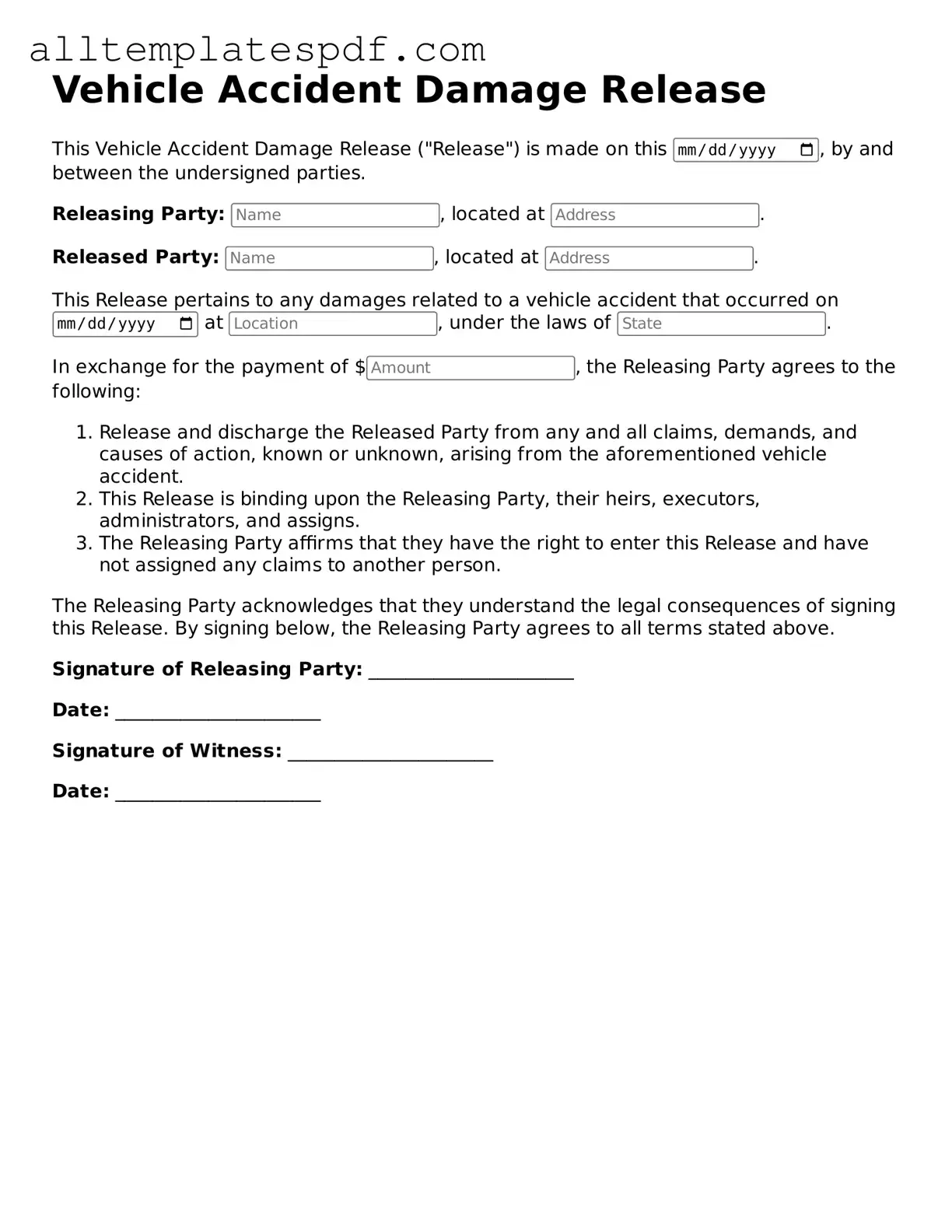Completing the Vehicle Accident Damage Release form can be a straightforward task, yet many individuals make common mistakes that can lead to complications. One frequent error is failing to provide complete personal information. Without accurate names, addresses, and contact details, processing the form becomes difficult. Always double-check that all required fields are filled out correctly.
Another mistake often seen is neglecting to include the details of the accident. This includes the date, time, and location of the incident. Omitting this information can delay the claims process. It is crucial to document these specifics thoroughly to ensure clarity.
Many people overlook the importance of signing the form. A signature signifies agreement and understanding of the terms outlined. Without it, the form is considered incomplete. Ensure that the signature is legible and matches the name provided in the personal information section.
Providing incorrect vehicle information is another common pitfall. This includes the make, model, and year of the vehicle involved in the accident. Inaccuracies can lead to confusion during the claims process. Verify that all vehicle details are correct before submission.
Some individuals fail to read the terms and conditions of the release. Understanding what rights are being waived is essential. Ignoring this step can lead to unintended consequences. Take the time to review the entire document to avoid surprises later.
Not including all relevant parties involved in the accident is a mistake that can complicate matters. Ensure that all drivers, passengers, and witnesses are mentioned. This helps in establishing a complete picture of the incident.
Another error is submitting the form without supporting documentation. This may include photographs of the damage, police reports, or witness statements. Providing these documents can strengthen the case and expedite the claims process.
Many people fail to keep a copy of the completed form for their records. This can lead to difficulties if questions arise later. Always make a copy before submitting the form to maintain a personal record of what was provided.
Some individuals rush through the form, leading to typographical errors. Simple mistakes can cause significant delays. Take your time to review each entry carefully before finalizing the submission.
Lastly, not following up after submission can be a significant oversight. It is essential to check on the status of the claim to ensure everything is proceeding smoothly. Regular follow-ups can help in addressing any issues that may arise promptly.
